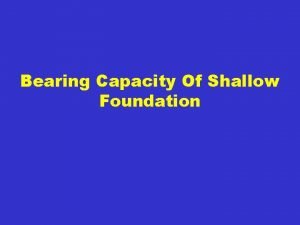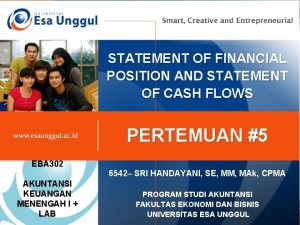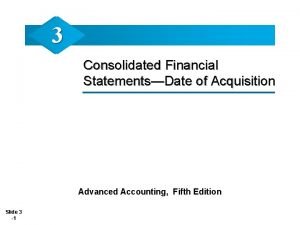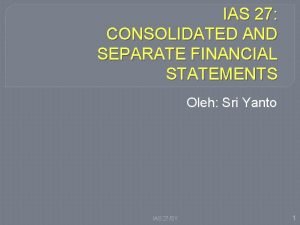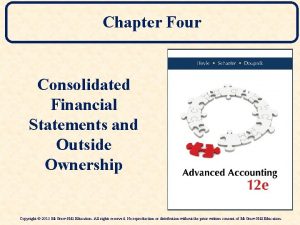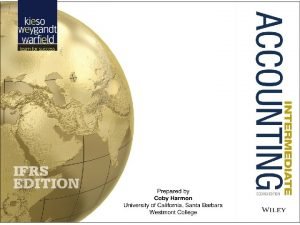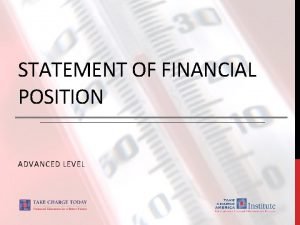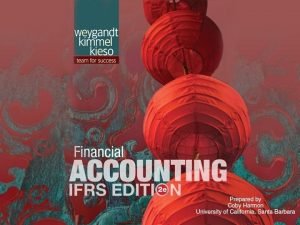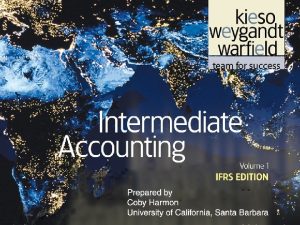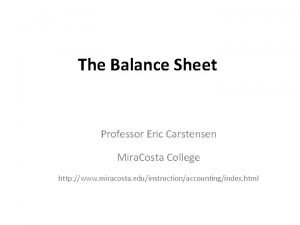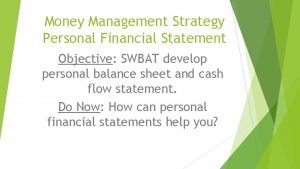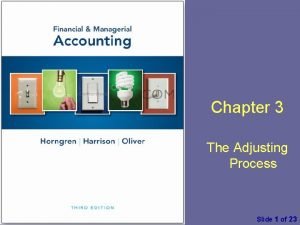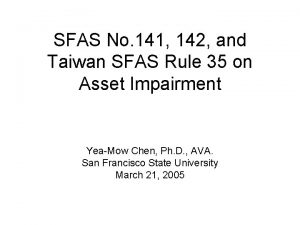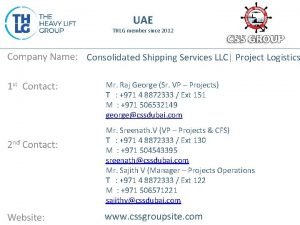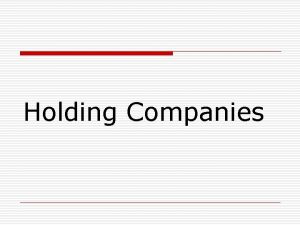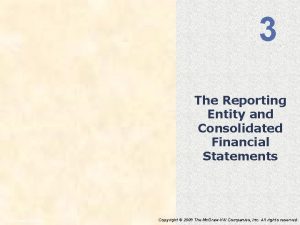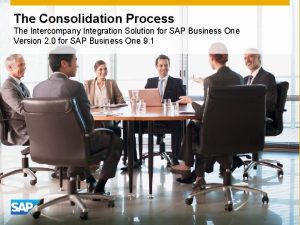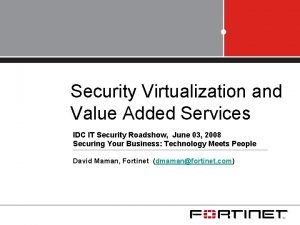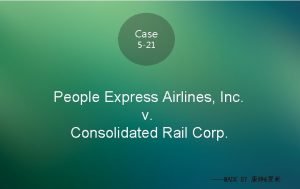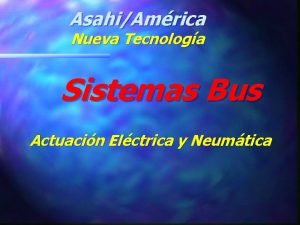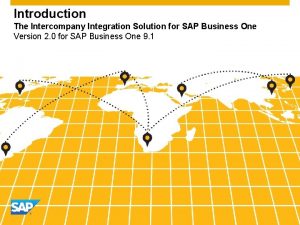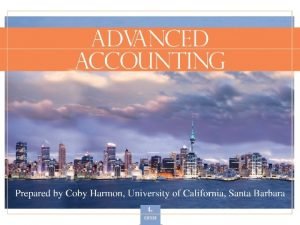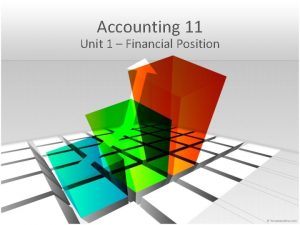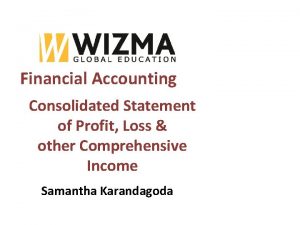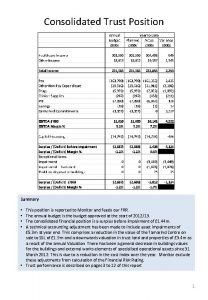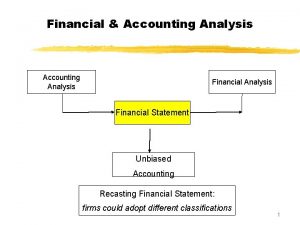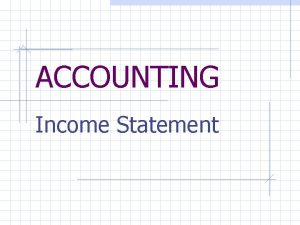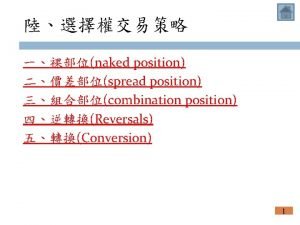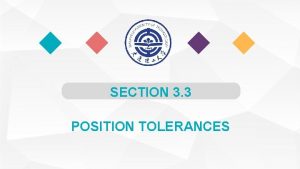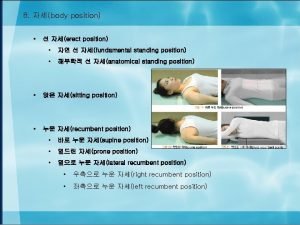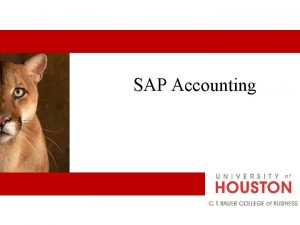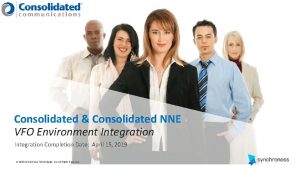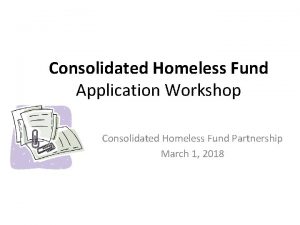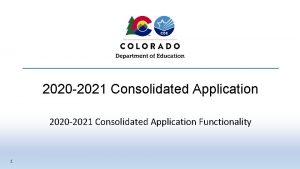Financial Accounting Consolidated Statement of Financial Position Samantha































- Slides: 31

Financial Accounting Consolidated Statement of Financial Position Samantha Karandagoda

Group • A Group Exists when one Entity Controls another Entity • Control is the power to govern the financial & operating policies • Normally Achieved by Owning More than 50% of Voting Rights

Non Controlling Interest • Shareholders who own less than 50% • Considered to be Shareholders of the Group • Their Shareholding is Reflected in the Equity of the Group

Group Accounts • Parent & Subsidiary are Separate Legal Entities • Requires Preparation of Separate Accounts • However to Reflect the Substance of a Group, Consolidated Accounts are Required

Acquisition Accounting • IFRS 3 Requires Acquisition Accounting (Purchase Method) to be used to Prepare Consolidated Accounts

Acquisition Accounting • Add 100% of the Parent’s & Subsidiary’s Assets, Liabilities, Income & Expenses • Investment in the Parents Books is not Included in Consolidated SOFP (since Subsidiary’s Net Assets + Goodwill is Included)

Goodwill at Acquisition • Good Will = Sum of the Fair Value of Investment + Sum of the Fair Value of Non Controlling Interest The Fair Value of the Net Assets Acquired

Non Controlling Interest • Balance for Non Controlling Interest will need to be Calculated & Included in the Consolidated Financial Statements • Share Capital of the Group is Only the Share Capital of the Parent

Subsidiary • Adjustments are Made to Record the Subsidiary’s Net Assets at Fair Value • Uniform Accounting Policies Should be Used • Intra. Group Balances & Transactions are Eliminated in Full • Profits/Losses from Intra. Group Transactions are Eliminated in Full

Consolidation Steps W 1: Map the Group Structure PARENT OWNERSHIP % SUBSIDIARY

Consolidation Steps W 2: Net Assets of Subsidiary Acquisition Date Share Capital XXX Retained XXX Earnings Other XXX Reserves XXX Reporting Date XXX XXX

Consolidation Steps W 3: Goodwill FV of Parent’s Investment Value of NCI at Acquisition FV of Sub’s Net Assets Acquired (W 2) Goodwill at Acquisition Impairment Goodwill at Reporting Date X X (X) X

Consolidation Steps W 4: Non Controlling Interest Value of NCI at Acquisition (W 3) NCI % x Post-Acquisition Reserves (W 2) NCI % x Impairment (W 3) (Fair Value Method Only) NCI at Reporting Date X X (X) X

Consolidation Steps W 5: Retained Earnings Parent Subsidiary Post Acquisition Reserves x % Ownership Impairment of Good Will X X (X) X

Consolidated SOFP • Goodwill: W 3 • Property Plant & Equipment: Parent + Subsidiary • Current Assets: Parent + Subsidiary • Share Capital: Parent Only • Retained Earnings: W 5 • Non-Controlling Interest: W 4 • Current Liabilities: Parent + Subsidiary

Goodwill • Guided by IFRS 3 • Parent Pays More than Net Assets because of: – Positive Reputation – Loyal Customer Base – Staff Expertise etc. • Negative Goodwill (Discount on acquisition) added to group retained earnings (profit!)

Value of NCI Holding • Fair Value – Market Value of the Subsidiary’s Shares at the Date of Acquisition – If not Traded, use other valuation • Proportion of Net Assets – Calculating the Share of the Fair Value of Subsidiary’s Net Assets (Share Capital + Retained Earnings)

Impairment of Goodwill • IFRS 3 Requires that Goodwill is tested at each reporting date for impairment • Impairment Review is Not Needed at Exam • You Will Be Given – Impairment Loss Amount – Data to Calculate the Amount

Fair Value Method • Reduce Goodwill by the Full Impairment Loss – CR Goodwill Account • Reduce Non Controlling Interest Proportionately – DR NCI Account • Reduce Retained Earnings for the Group Proportionate to the Parent’s Ownership – DR Retained Earnings

Proportion of Net Assets Method • Reduce Goodwill by the Full Impairment Loss – CR Goodwill • Reduce Retained Earnings for the Group by the Full Impairment Loss – DR Retained Earnings

Intra Group Balances • • Must Be Eliminated in Full Receivables & Payables Intra Group Loans Cancelled off Upon Consolidation

Cash in Transit • One Entity has Sent Cash (& Accounted) but the other entity has not received – hence a Receivable in Recipients Accounts Yet • DR Bank • CR Receivables

Goods in Transit • Goods have been sent by one entity, but have not been received by the other • DR Inventory • CR Payables

Unrealized Profits • Occurs when Entity within Group Sells to Another • If the Goods are Still Held within the Group as at the Reporting Date, Profit is Not Realized • Parent Sells – DR Retained Earnings – CR Inventory

Unrealized Profits • Subsidiary Sells • Impacts NCI • DR Post Acquisition Reserves of the Subsidiary within the Group Retained Earnings • DR Post Acquisition Reserves of the Subsidiary within the NCI • CR Inventory

Provisions for Unrealised Profits – Non Current Assets • Happens when Non Current Assets are Sold within the Group • Profit on Disposal Removed from Sellers Books

Parent Sells • DR Retained Earnings of the Parent within the Group Retained Earnings by the Difference in Carrying Amount • CR Property Plant & Equipment by the Difference in Carrying Amount • DR PPE by Diff. in Depreciation • CR Retained Earnings within the Group Retained Earnings

Subsidiary Sells • DR post Acquisition Reserves of the Sub. Within the Group Retained Earnings by the Difference in CA • DR Post Acquisition Reserves of the Subsidiary within the NCI by the Difference in CA • DR PPE by the Difference in CA

Subsidiary Sells • CR PPE By the Difference in CA • CR Post Acquisition Reserves of the Subsidiary within the Group Retained Earnings by the Difference in Depreciation • CR Post Acquisition Reserves of the Subsidiary within the NCI by the Difference in Depreciation

Mid Year Acquisitions • Assume Profits are Earned Evenly Over the Year • Time Apportioned & Added to Reserves Brought Forward

Financial Accounting Consolidated Statement of Financial Position Samantha Karandagoda
 Terzaghi's bearing capacity theory
Terzaghi's bearing capacity theory Cash debt coverage
Cash debt coverage Second position ballet
Second position ballet Consolidated financial statements date of acquisition
Consolidated financial statements date of acquisition Ias consolidated financial statements
Ias consolidated financial statements Partial equity method consolidation worksheet
Partial equity method consolidation worksheet Financial accounting and accounting standards chapter 1
Financial accounting and accounting standards chapter 1 Management accounting vs financial accounting ppt
Management accounting vs financial accounting ppt Tori's statement of financial position
Tori's statement of financial position Report form statement of financial position
Report form statement of financial position Tori's statement of financial position answer key
Tori's statement of financial position answer key Chapter 5 merchandising operations
Chapter 5 merchandising operations Classified statement of financial position
Classified statement of financial position Unclassified balance sheet
Unclassified balance sheet Personal statement of financial position
Personal statement of financial position Income statement in financial accounting
Income statement in financial accounting Sfas 142
Sfas 142 Consolidated shipping services
Consolidated shipping services The consolidated global group
The consolidated global group Holding companies
Holding companies Gepa statement examples
Gepa statement examples Shear strength in soil mechanics
Shear strength in soil mechanics Parent company theory
Parent company theory Consolidated companies are different sap
Consolidated companies are different sap Noc saga consolidated
Noc saga consolidated Consolidated service center
Consolidated service center People express airlines v consolidated rail corp
People express airlines v consolidated rail corp Abitibi consolidated
Abitibi consolidated Missouri consolidated health care plan
Missouri consolidated health care plan Sap intercompany process
Sap intercompany process Business intelligence project plan
Business intelligence project plan Consolidated retained earnings
Consolidated retained earnings
